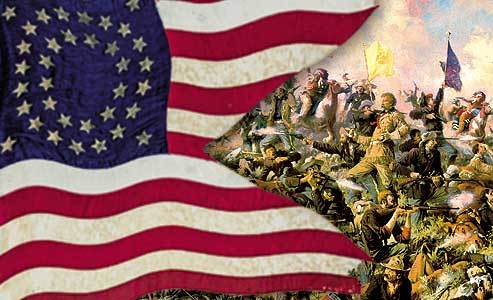


12/11/2010
The Detroit Institute of Arts has sold a flag carried by the Seventh Cavalry at the Battle Of Little Bighorn.
"We'll be using the proceeds to strengthen our collection of Native American art, which has a rather nice irony to it I think," said Graham Beal, director of the Detroit museum.
I don’t think so. I think Beal’s remark is a damned insult to the murdered and mutilated troopers of the Seventh Cavalry.
Beal, wrote on the Institute’s website that they have a rule that art is never sold to pay expenses, only to buy other art, which means that it’s a straight preference for "Native American" art over American history and murdered American soldiers.
10 December 2010 Last updated at 18:47 ET
Gen Custer flag sells for $2.2m at Sotheby’s auction

The flag was found beneath a dead American soldier following the Battle of Little Bighorn
A flag carried by Lt Gen George Armstrong Custer and his 7th Cavalry troops into their last stand at the Battle of Little Bighorn has been sold at auction for $2.2m (?1.4m).
The guidon is the only one not captured or lost during the 1876 battle in the state of Montana.
The flag, previously valued at $5m, was bought by a private US collector in the auction at Sotheby’s in New York.
The former owner, Detroit Institute of Arts, paid $54 for the flag in 1895.
"We'll be using the proceeds to strengthen our collection of Native American art, which has a rather nice irony to it I think," said Graham Beal, director of the Detroit museum.
Gen Custer and all his soldiers — more than 200 in number — were killed by thousands of Lakota Sioux and Northern Cheyenne warriors during their attempt to reclaim the Black Hills region from the Lakota as part of a US government campaign.
The flag was found beneath a dead American soldier following the Battle of Little Bighorn — or the Battle of Greasy Grass Creek, as the victors of the battle named it.
The flag was renamed Culbertson Guidon after Sgt Ferdinand Culbertson, a member of the burial party who recovered it from the field.
Sitting Bull and Crazy Horse were among the Lakota leaders who fought in the battle.